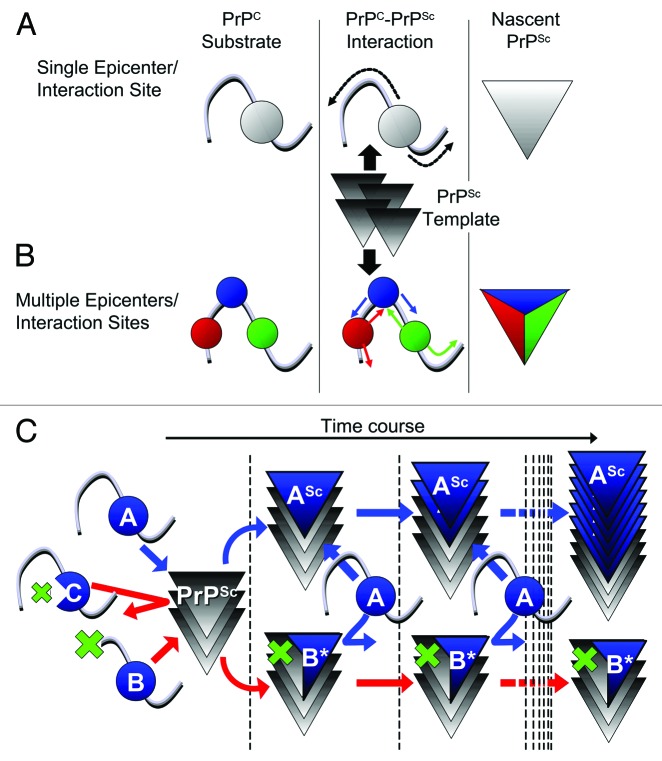Figure 1. (A, B) Schemes illustrating differences between “single epicenter/interaction site model” and “multiple epicenters/interaction sites model.” (A) Single epicenter/interaction interface model: PrPC substrate interacts with PrPSc template at a specific region, irrespective of the strain type, and structural changes spread from this interaction interface to the entire molecule, acting as an epicenter of structural changes. (B) Multiple epicenter/interaction interface model: PrPC substrate can interact with PrPSc template at more than one region and structural changes spread from each epicenter until the entire molecule is converted. (C) Scheme illustrating hypothetic mechanism of dominant-negative inhibition (DNI) when conversion -competent and -incompetent PrPC coexist. The interaction interface of PrPC is represented by a “blue ball.” The blue and red arrows indicate situations where the competition for PrPSc template was won by conversion-competent or conversion-incompetent PrPC, respectively. At the beginning, molecules with an intact interaction interface can bind the PrPSc template irrespective of their conversion abilities, i.e., conversion-competent PrP, “A,” or conversion-incompetent PrP with a defect outside the interface, “B,” can bind, whereas conversion-incompetent PrP with a defect in the interface, “C,” cannot even interact. After binding, “A” converts to a nascent PrPSc “ASc,” while “B” undergoes regional structural changes to become “B*” for high-affinity binding. The PrPSc template bound by “B*” cannot function as the template anymore, consequently inhibiting conversion of “A.”

An official website of the United States government
Here's how you know
Official websites use .gov
A
.gov website belongs to an official
government organization in the United States.
Secure .gov websites use HTTPS
A lock (
) or https:// means you've safely
connected to the .gov website. Share sensitive
information only on official, secure websites.
